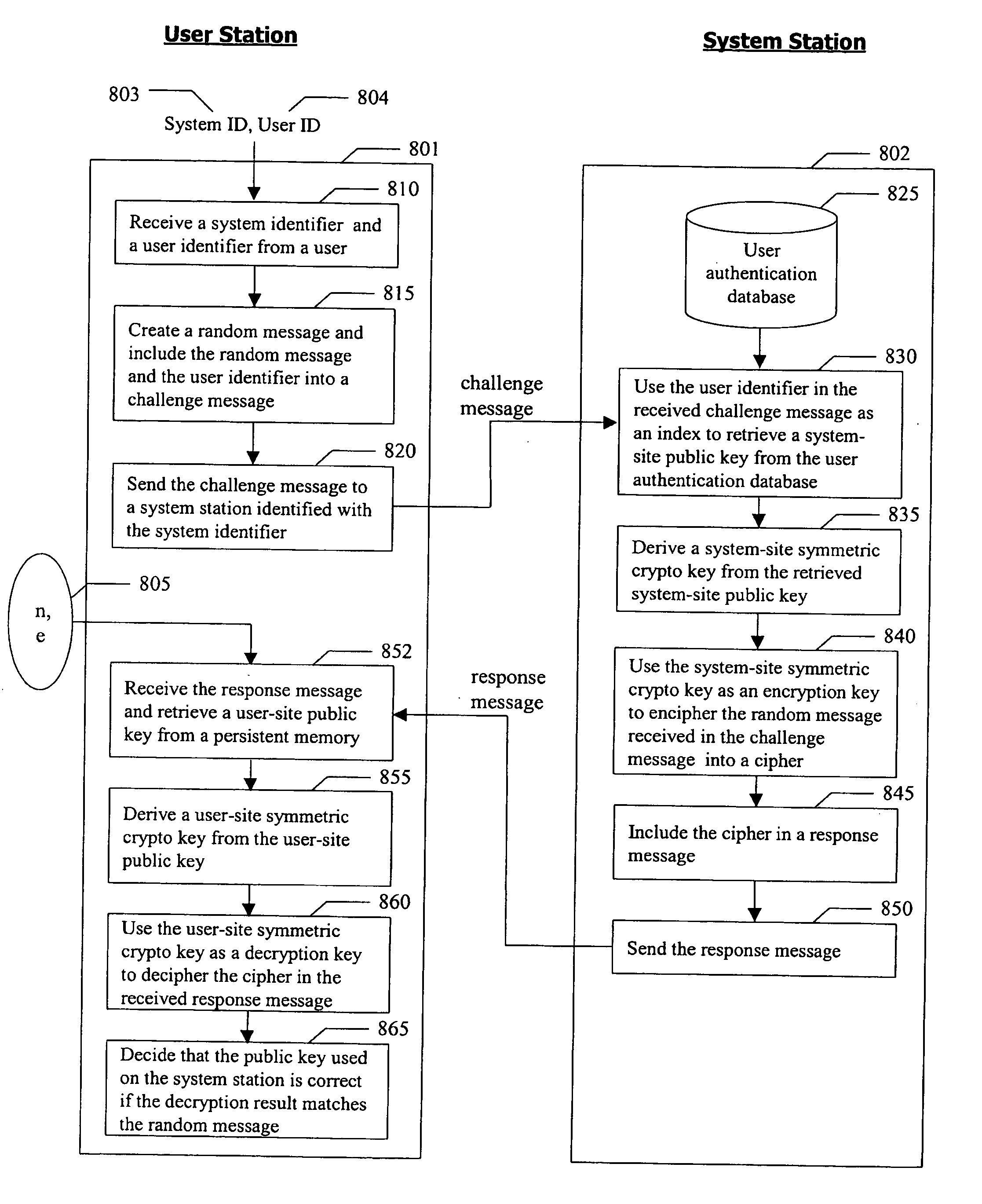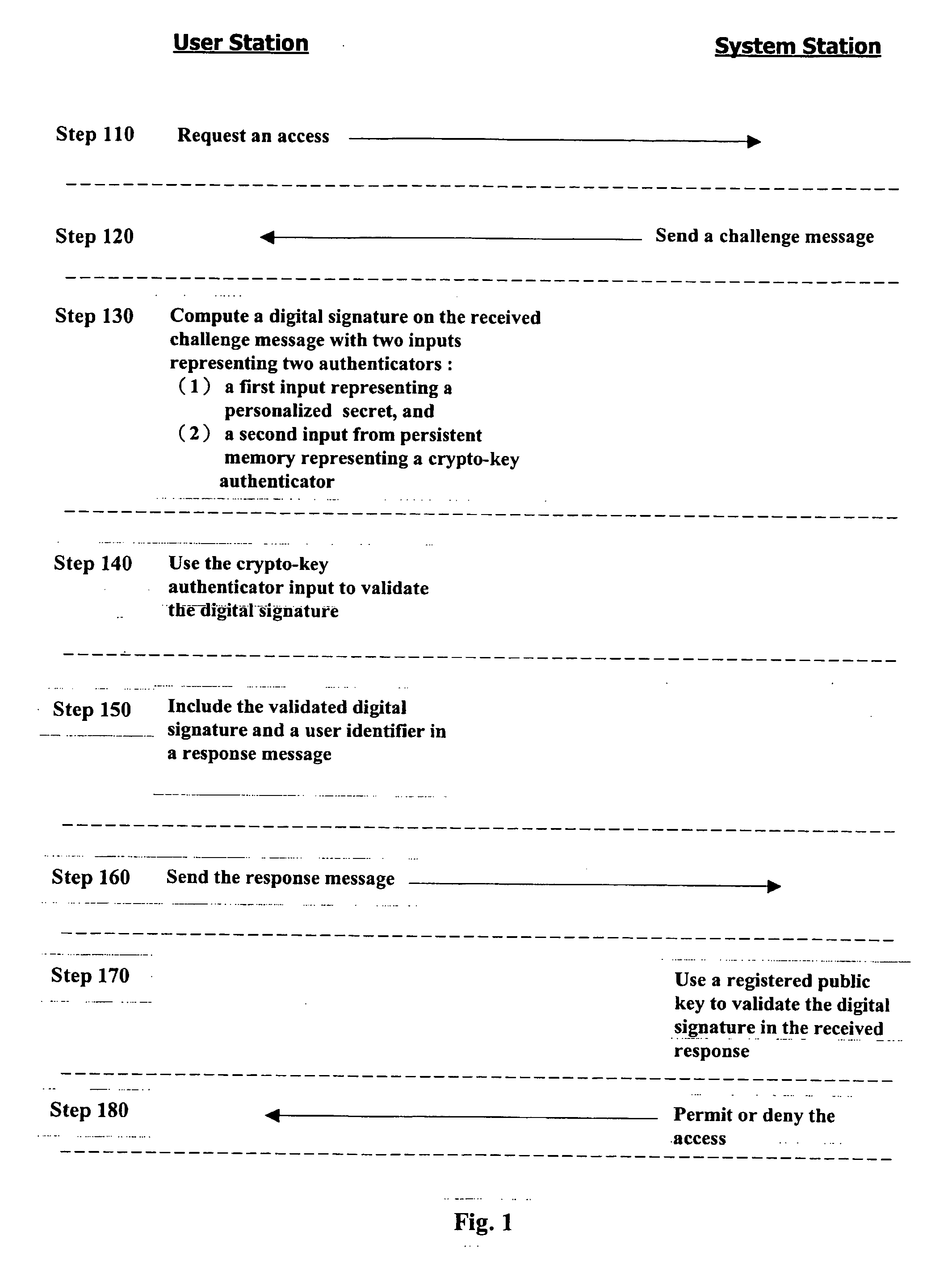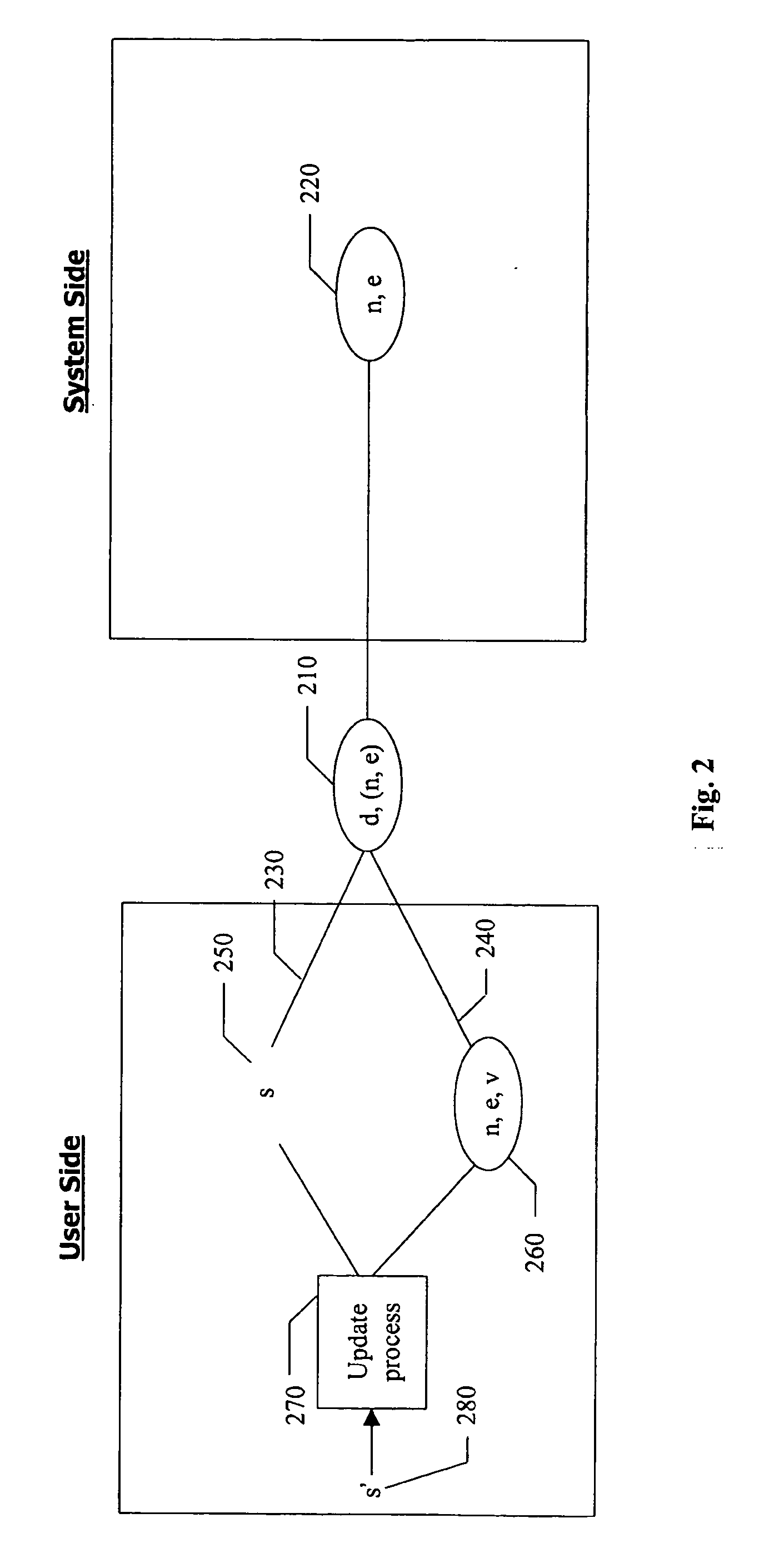User authentication based on asymmetric cryptography utilizing RSA with personalized secret
a technology of user authentication and asymmetric cryptography, applied in the field of user authentication, can solve the problems of inability to find two distinct inputs, inefficient algorithm, and inability to independently control the private key
- Summary
- Abstract
- Description
- Claims
- Application Information
AI Technical Summary
Benefits of technology
Problems solved by technology
Method used
Image
Examples
Embodiment Construction
[0072] Reference will now be made in detail to the preferred embodiments of the present invention, examples of which are illustrated in the accompanying drawings. Wherever possible, the same reference numbers are used in the drawings and the description to refer to the same or like parts.
[0073] User authentication described in the present invention is built on a challenge and response process for conducting the communications between the user station and the system station. This process is also called a protocol, for it defines a step-by-step manner guiding the communications between two stations. In the process, the user station uses two authenticators from a user to produce a digital signature in response to a challenge from the system station while the system station uses a registered public key associated with the user as a verifier to validate the digital signature.
[0074] Various implementations of the user authentication described in this invention disclosure have, among oth...
PUM
 Login to View More
Login to View More Abstract
Description
Claims
Application Information
 Login to View More
Login to View More - R&D
- Intellectual Property
- Life Sciences
- Materials
- Tech Scout
- Unparalleled Data Quality
- Higher Quality Content
- 60% Fewer Hallucinations
Browse by: Latest US Patents, China's latest patents, Technical Efficacy Thesaurus, Application Domain, Technology Topic, Popular Technical Reports.
© 2025 PatSnap. All rights reserved.Legal|Privacy policy|Modern Slavery Act Transparency Statement|Sitemap|About US| Contact US: help@patsnap.com



